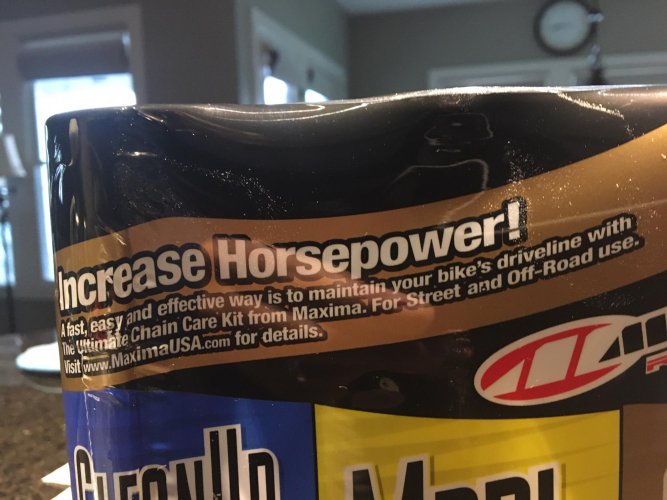Ya gotta love the folks down in marketing. By almost accident I've been made aware of a sure fire way to increase horsepower. Other day needed to order a small RAM item, decided to get free shipping by ordering the "kit" for cleaning/lubing chain maintenance. Little did I realize the inherit aspects of using these products - INCREASE HORSEPOWER! It's right there on the packaging....
Now only need to figure out if it goes in the fuel tank or crankcase to achieve that "increase"? LOL!
Now only need to figure out if it goes in the fuel tank or crankcase to achieve that "increase"? LOL!




